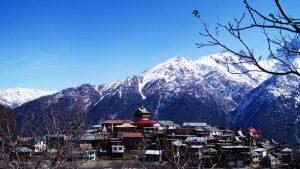Last Updated: June 25, 2019 Kamlesh Nayal
Festivals and fairs related to the religious sites and temples in India are an integral part of the country’s ancient cultures and traditions. Where at one end, some festivals are based on legends related to mythological events, some are based on sheer myths and superstitions. One thing which is common in all these temple festivals is the elaborate and exotic celebrations comprising huge processions, fairs, and musical and dance events. A spectacle of few of the temple festivals and fairs in India is sure to give a deep understanding of India’s rich, vibrant and colorful customs. Listed below are 15 of the best temple festivals and fairs in India.
Puri Rath Yatra, Odissa
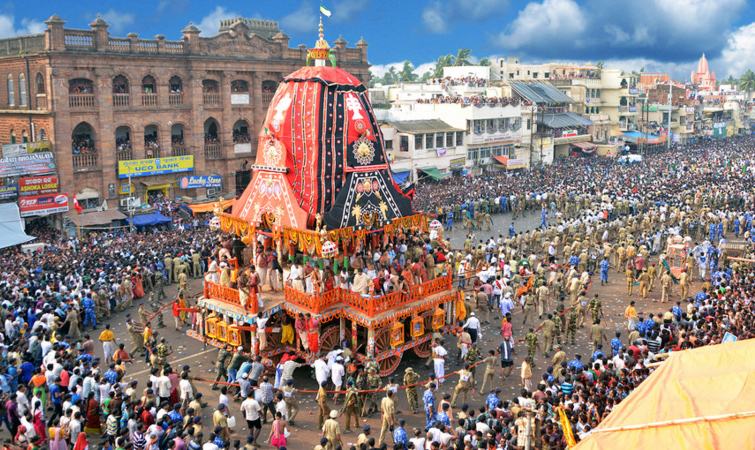 The world famous ‘Rath Yatra’ in Jagannath Puri, Odissa, is one of the most eagerly awaited festivals of India. Celebrated annually in the months of June-July, the festival is an exotic display of extravagance and grandeur. During the festival, deities of Lord Jagannath along with his elder brother, Balabhadra and sister, Subhadra are carried in huge and colourful chariots made in the form of temples. These chariots are pulled through strings and a magnanimous crowd of devotees from all over India and across the world gather in streets to just have an opportunity of touching these strings. The Yatra comes to an end when all three deities reach the ‘Shri Gundicha Temple’, dedicated to the aunt of Lord Jagannath. Deities reside in the temple for 9 days and are served with sweets and chappan bhog. On the 9th day, deities are carried back to the Jagannath Temple with same pomp and show. This event is called as the ‘Bahuda Jatra’. City of Puri, during these two days, converts into myriad of colours. Millions of pilgrims and spectators gather during the festival to seek blessings of the lord.
The world famous ‘Rath Yatra’ in Jagannath Puri, Odissa, is one of the most eagerly awaited festivals of India. Celebrated annually in the months of June-July, the festival is an exotic display of extravagance and grandeur. During the festival, deities of Lord Jagannath along with his elder brother, Balabhadra and sister, Subhadra are carried in huge and colourful chariots made in the form of temples. These chariots are pulled through strings and a magnanimous crowd of devotees from all over India and across the world gather in streets to just have an opportunity of touching these strings. The Yatra comes to an end when all three deities reach the ‘Shri Gundicha Temple’, dedicated to the aunt of Lord Jagannath. Deities reside in the temple for 9 days and are served with sweets and chappan bhog. On the 9th day, deities are carried back to the Jagannath Temple with same pomp and show. This event is called as the ‘Bahuda Jatra’. City of Puri, during these two days, converts into myriad of colours. Millions of pilgrims and spectators gather during the festival to seek blessings of the lord.
Thrissur Pooram, Kerala
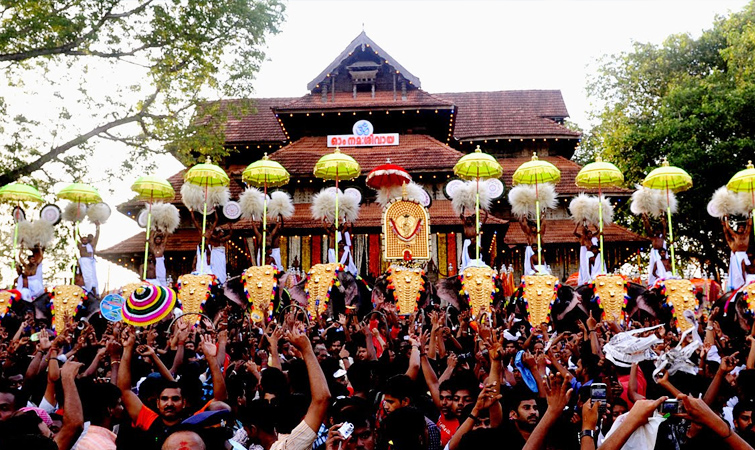 Thrissur is the cultural centre of Kerala and the ‘Thrissur Pooram’ festival celebrated in this sacred city of Lord Shiva is a true spectacle of grandeur and opulence. Held in the months of April-May, at the ‘Vadakkumnathan Temple’, the festival is a week-long gala affair. During the festival, priests of different temples pay their obeisance to Lord Shiva. Devotees and spectators from different corners of the country throng to this place to just catch a glimpse of the festival’s magnificence and vibrancy. A friendly tug-of-war competition held between two groups of temples divided in Eastern and Western zones with their majestically ornamented elephants, fireworks and exchange of huge colourful umbrellas, known as the ‘Kudamattam’ ceremony; is truly a visual treat to eyes.
Thrissur is the cultural centre of Kerala and the ‘Thrissur Pooram’ festival celebrated in this sacred city of Lord Shiva is a true spectacle of grandeur and opulence. Held in the months of April-May, at the ‘Vadakkumnathan Temple’, the festival is a week-long gala affair. During the festival, priests of different temples pay their obeisance to Lord Shiva. Devotees and spectators from different corners of the country throng to this place to just catch a glimpse of the festival’s magnificence and vibrancy. A friendly tug-of-war competition held between two groups of temples divided in Eastern and Western zones with their majestically ornamented elephants, fireworks and exchange of huge colourful umbrellas, known as the ‘Kudamattam’ ceremony; is truly a visual treat to eyes.
Arattu Festival, Kerala
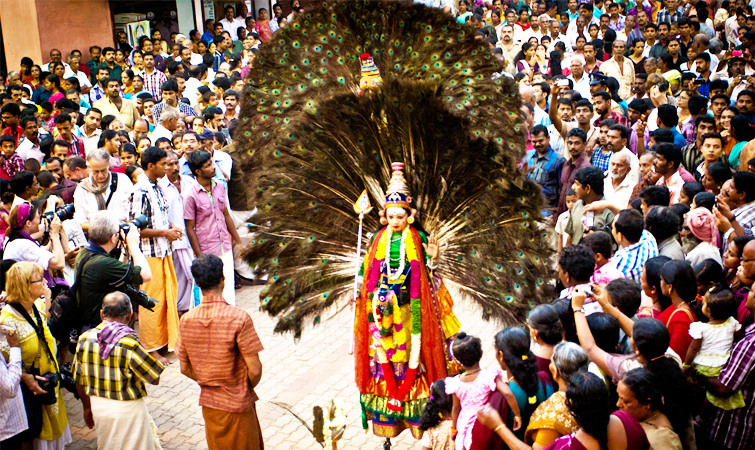 Celebrated in the months of March-April and October-November at the ‘Sree Padmanabha Swamy Temple’ in Thiruvanathapuram, the Arattu festival is one of the most significant and vibrant temple fairs in Kerala. Arattu, actually is the closing ceremony of the 10-day long festivities in the temple but, since the ceremony takes place at such a grand level, it is no less than a full-fledged fair. During the ceremony, temple idols are taken to the ‘Shankumugham Beach’ for a holy bath. Huge procession of beautifully decorated elephants accompanied with drummers, musicians and dancers display a magnificent splendour of the grand festivities. Nightlong Kathakali dance performances, Velakali and Mayilattom (peacock dance) are other major highlights of this 10-day long gala event.
Celebrated in the months of March-April and October-November at the ‘Sree Padmanabha Swamy Temple’ in Thiruvanathapuram, the Arattu festival is one of the most significant and vibrant temple fairs in Kerala. Arattu, actually is the closing ceremony of the 10-day long festivities in the temple but, since the ceremony takes place at such a grand level, it is no less than a full-fledged fair. During the ceremony, temple idols are taken to the ‘Shankumugham Beach’ for a holy bath. Huge procession of beautifully decorated elephants accompanied with drummers, musicians and dancers display a magnificent splendour of the grand festivities. Nightlong Kathakali dance performances, Velakali and Mayilattom (peacock dance) are other major highlights of this 10-day long gala event.
Attuvela Mahotsavam, Kerala
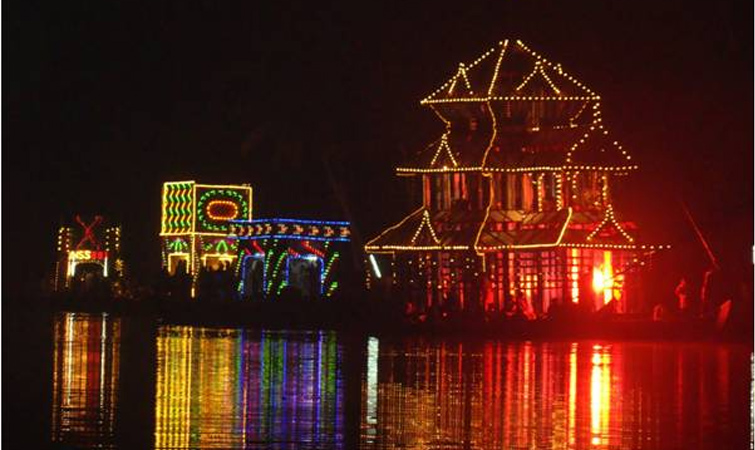
Photo: bit.ly/1LlUens
One of the very unique temple festivals of Kerala, the ‘Attuvela Mahotsavam’ is an eye candy. Celebrated in the months of March-April, the festival is a 2 days long event and is held at the ‘Elankavu Bhagavathy Temple’ in the Kottayam district of Kerala. The festival is celebrated as a welcome ceremony of ‘Kodungallur Bhagavathy’ who comes to meet her sister, ‘Elankavu Bhagavathy’ every year. During the festival, beautifully decorated and illuminated canoe in the form of temple replica carrying the deity of Goddess ‘Kodungallur Bhagavathy’ are marched through the waters of Moovattupuzha River to the temple of ‘Elankavu Bhagavathy Temple’. Several small lit up canoes floating on the water accompanied with temple percussion music during the celebrations; is truly a sight to behold. A spectacle of this temple is a must when you are in Kerala during the same timeframe.
Chithirai Thiruvizha Festival, Tamil Nadu
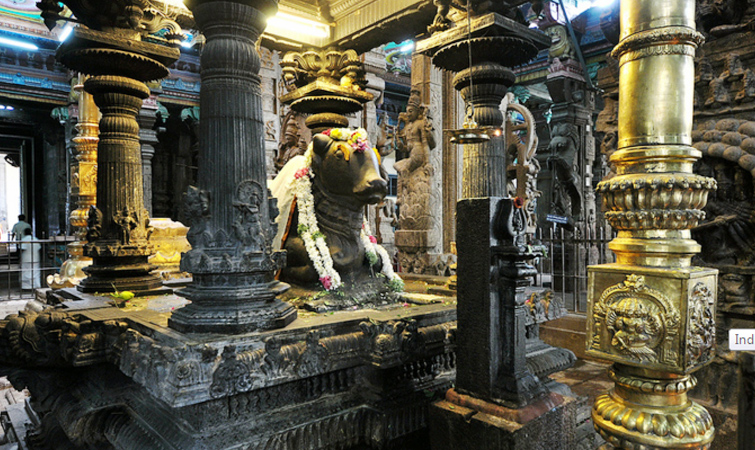
Photo: bit.ly/1Ub3k94
Celebrated in the month of April at the ‘Meenakshi Amman’ Temple, the ‘Chithirai Thiruvizha’ festival is the biggest temple fair in Madurai that continues for about 2 weeks. This festival celebrates the marriage of Goddess Meenakshi (a manifestation of Goddess Parvati) to Lord Sundareshwara (a manifestation of Lord Shiva). Deities of Meenakshi and Sundareshwara bedecked in their wedding attires are paraded in massive chariots along the temple streets and finally taken to the exquisitely decorated hall of Meenakshi Temple where the wedding rituals are performed. Devotees gather in streets during the procession and offer flowers and coconuts to the deities. Whole city of Madurai comes to life during the celebrations. The zeal and excitement of the festival can be seen and felt everywhere in the city. A true spectacle, this festival is indeed one of the major cultural events in India.
Vairamudi Garudotsava Festival, Karnataka
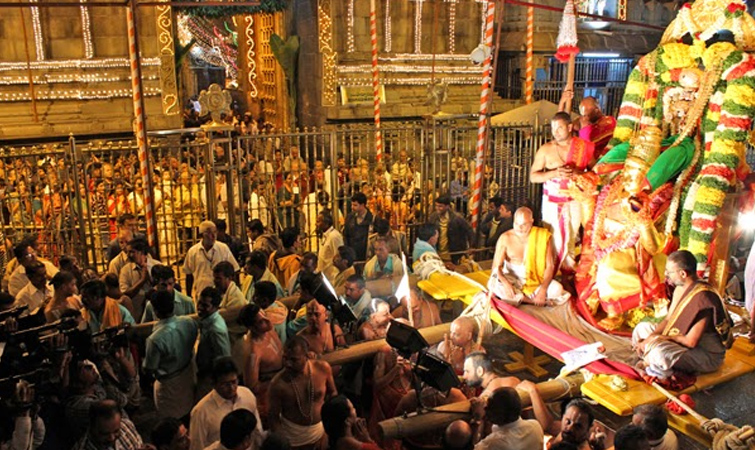 Held at the ‘Cheluvanarayana Swamy Temple’ in Melukote, the prominent pilgrim centre for Vaishnavites near Mysore in Karnataka, the ‘Vairamudi Brahmotsava Festival’ is a huge crowd puller attracting more than 4 lac pilgrims from all over India and parts of the world. The celebrations take place in the months of March-April when Lord Cheluvarayaswami, a manifestation of Lord Vishnu, is adorned with a diamond studded crown belonging to the Mysore’s royal family and is taken out in an elaborate procession with his consorts on a golden Garuda. Huge number of devotees gathers in the town a night before to be part of the rituals and grand processions.
Held at the ‘Cheluvanarayana Swamy Temple’ in Melukote, the prominent pilgrim centre for Vaishnavites near Mysore in Karnataka, the ‘Vairamudi Brahmotsava Festival’ is a huge crowd puller attracting more than 4 lac pilgrims from all over India and parts of the world. The celebrations take place in the months of March-April when Lord Cheluvarayaswami, a manifestation of Lord Vishnu, is adorned with a diamond studded crown belonging to the Mysore’s royal family and is taken out in an elaborate procession with his consorts on a golden Garuda. Huge number of devotees gathers in the town a night before to be part of the rituals and grand processions.
Karaga Festival, Karnataka
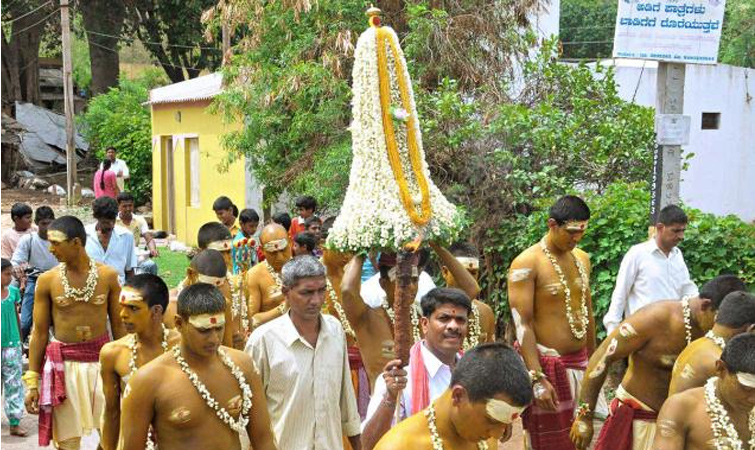
Photo: bit.ly/1XpGPve
One of the oldest festivals of Karnataka, the ‘Karaga Festival’ is held every year for 9 days during the month of February in Bangalore. The festival is celebrated as a tribute to Goddess Draupadi who is believed to be an incarnation of Goddess Shakti. The last day of the festival is a grand celebration of rituals and colourful processions. The chosen man of the Tigala community is dressed in a feminine attire to represent Draupadi and carries the Karaga or the pyramidal floral structure on his head without touching it. The procession starts from the ‘Shri Dharmaraya Swamy Temple’ and bare-chested men of the community follow the procession to guard the Karaga. Major highlight of the festival is the scene of these bare-chested men hitting their chests with swords and dancing bare-foot over the live charcoals. The procession also halts at the ‘Dargah-e-Sharif’ for some time, displaying the secular aspect of the festival. This festival is a must-attend to get an insight into some of the strange cultures and traditions of India.
Kotappakonda Temple Fair, Andhra Pradesh
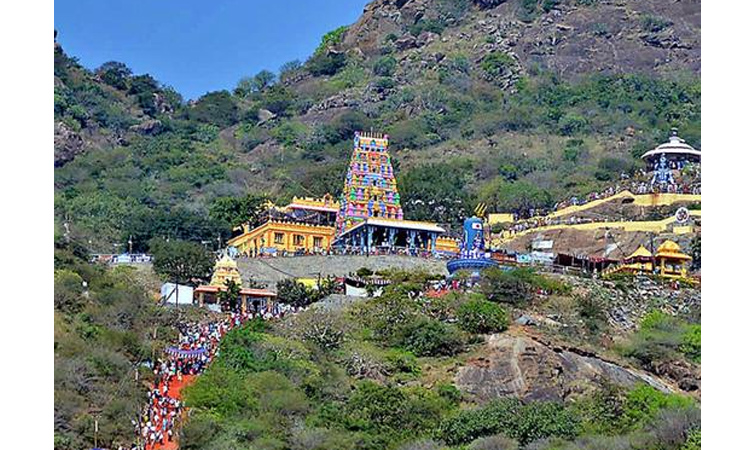
Photo: bit.ly/1RJ3Ntm
‘Kotappakonda Temple’ perched atop the Kotappakonda Hill near Narasaraopet in Andhra Pradesh, plays the host to the famous ‘Kotappakonda Temple Fair’ that is held every year on the eve of Maha Shivratri in February. Thousands of devotees throng the temple with decorated and lighted prabhas (huge lamps) in their hands as an offering to Lord Shiva, the presiding deity of the temple. Devotees also get their heads shaved during the celebrations as a belief that their wishes are fulfilled by the lord on sacrificing the hairs. The sight of people relishing on delicious sweets, small girls queued up to purchase colourful bangles at the bangle stalls, ladies bargaining with the owners of the stalls selling bamboo items and villagers loudly calling out the crowd to sell their goats and cattle; is something that gives you a feel of a true Indian fair.
Nanda Devi Festival, Uttarakhand
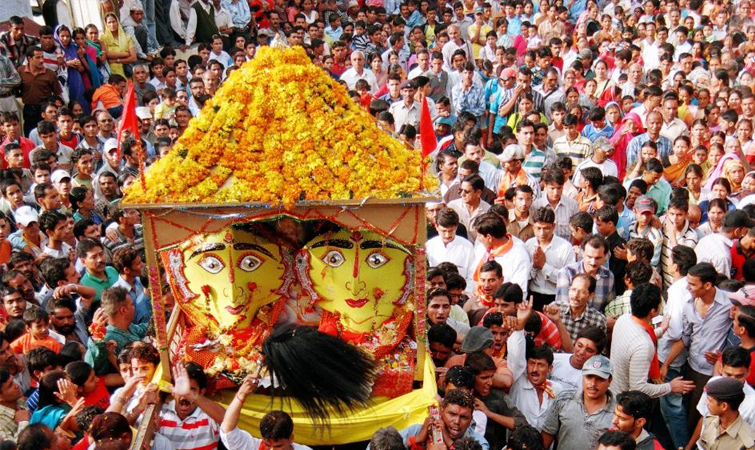
Photo: bit.ly/1QXw4fR
Annually organized in the month of September at the ‘Ma Nanda Devi Temple’ in Almora district of Uttarakhand, the festival sees a huge crowd of pilgrims and spectators from both, neighbouring and far-off areas. Dedicated to Goddess Nanda and Sunanda, major highlight of the festival is the procession of Nanda Devi carried in a well decorated ‘Dola’, on the winding streets of Almora. Goddess Nanda is believed to be the guardian deity of hill town of Almora and other Kumaon regions; the festival is celebrated with great pomp and zeal as an obeisance to the Goddess. A fair is also organized during the festival at the temple premises wherein in local artisans and craftsmen sell their handicraft items. Folk songs and dances are also a major part of the grand celebrations.
Vaikunth Chaturdashi Mela, Uttarakhand
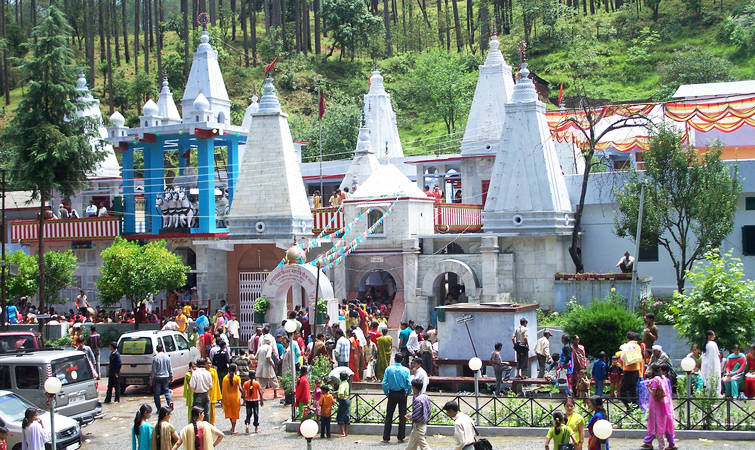 Vaikunth Chaturdashi is one of the most auspicious days for Hindus. This day is celebrated in a grand way during the months of October-November at the ‘Kamleshwar Mahadev Temple’ in Srinagar, Uttarakhand. Thousands of devotees visit the temple on this auspicious day to pay homage to Lord Shiva. People stay awake all night and pray to Lord Shiva with lighted ‘diyas’ in their hands. It is believed that standing and praying all night with a diya in hand on the day of Vaikunth Chaturdashi, can fulfil the wish of a child for childless couples. View of the ‘Alaknanda River’ illuminated with lighted lamps on the night of Vaikunth Chaturdashi is a sight to behold. A 5-day fair organized in the temple is also an event to look forward to during the celebrations.
Vaikunth Chaturdashi is one of the most auspicious days for Hindus. This day is celebrated in a grand way during the months of October-November at the ‘Kamleshwar Mahadev Temple’ in Srinagar, Uttarakhand. Thousands of devotees visit the temple on this auspicious day to pay homage to Lord Shiva. People stay awake all night and pray to Lord Shiva with lighted ‘diyas’ in their hands. It is believed that standing and praying all night with a diya in hand on the day of Vaikunth Chaturdashi, can fulfil the wish of a child for childless couples. View of the ‘Alaknanda River’ illuminated with lighted lamps on the night of Vaikunth Chaturdashi is a sight to behold. A 5-day fair organized in the temple is also an event to look forward to during the celebrations.
Devidhura Temple Festival, Uttarakhand
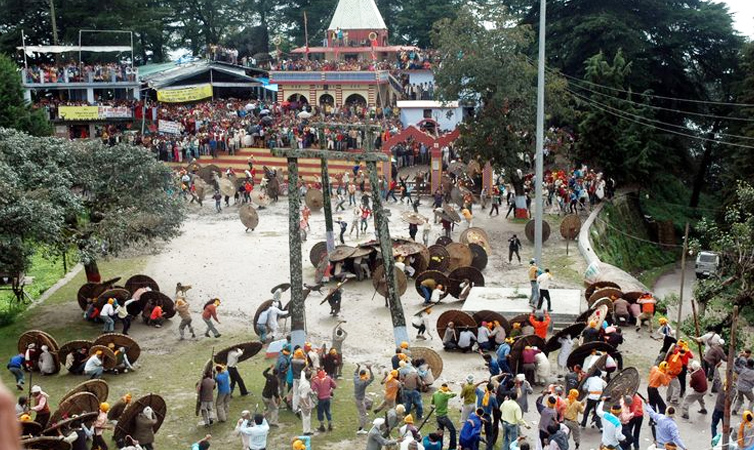
Photo: bit.ly/1P7WBoH
Held at the temple of ‘Varahi Devi’ in Devidhura near Almora in Uttarakhand, the festival is celebrated with great zeal every year on the auspicious occasion of Raksha Bandhan in August. Hundreds of pilgrims from hilly regions of Kumaon, Garhwal and Nepal visit the temple to be part of its celebrations. During the festival, idol of Varahi Devi, kept inside a brass casket is taken in a procession to a nearby spring where the blindfolded priest bathes the idol with rituals and replaces it back in the casket. Next day, a grand ‘Bagwal Fair’ is organized in which two groups of men with huge wooden shields in their hands, indulge in an unusual fight of pelting stones at each other in front of the temple. Lots of spectators visit this fair to have a glimpse at this uncommon sight.
Kaila Devi Fair, Rajasthan

Photo: bit.ly/1Rhz6ec
One of the most famous fairs of Rajasthan, ‘Kaila Devi Fair’ is held at the ‘Kaila Devi Temple’ in Karauli district of Rajasthan during months of March-April. The fair marks the obeisance to Devi Kaila who is the presiding deity of the temple. Large number of people including devotees, tourists and foreigners visit the fair to be part of the prayers and socio-cultural events that are organized in the temple premises. Many devotees visit the temple covering a distance of 15 – 20 km. by dragging themselves lying flat on the route. High amount of religious belief and physical endurance can be seen in these ardent devotees. The festival gives you an insight in a true Rajasthani culture.
Buddha Purnima, Bodhgaya, Bihar
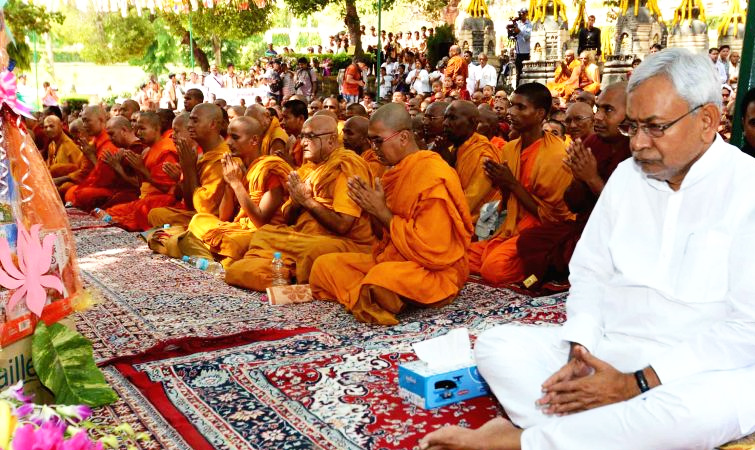 Buddha Purnima marks the birthday of Lord Buddha and is celebrated with great fervour and enthusiasm at the ‘Mahabodhi Temple’ in Bodhgaya. The sacred city of Bodhgaya holds a great religious significance for Buddhists all over the world as it is the place where Lord Buddha attained enlightenment. Thousands of Buddhist monks, tourists and devotees throng the temple to be a part of special prayers and celebrations that are held on this day. Chanting of Buddhist hymns and prayers can be heard throughout the day in the Mahabodhi Temple complex, which is beautifully decorated with prayer flags and colourful buntings. As part of the celebrations, a grand procession is also carried out from the 80 ft. ‘Grand Buddha Statue’ up to the ‘Bodhi Tree’ and devotees offer fruits, flowers and incense to the statue of Buddha. Being part of these grand celebrations is one of the most divine experiences you can have in lifetime.
Buddha Purnima marks the birthday of Lord Buddha and is celebrated with great fervour and enthusiasm at the ‘Mahabodhi Temple’ in Bodhgaya. The sacred city of Bodhgaya holds a great religious significance for Buddhists all over the world as it is the place where Lord Buddha attained enlightenment. Thousands of Buddhist monks, tourists and devotees throng the temple to be a part of special prayers and celebrations that are held on this day. Chanting of Buddhist hymns and prayers can be heard throughout the day in the Mahabodhi Temple complex, which is beautifully decorated with prayer flags and colourful buntings. As part of the celebrations, a grand procession is also carried out from the 80 ft. ‘Grand Buddha Statue’ up to the ‘Bodhi Tree’ and devotees offer fruits, flowers and incense to the statue of Buddha. Being part of these grand celebrations is one of the most divine experiences you can have in lifetime.
Guru Nanak Jayanti, Amritsar, Punjab
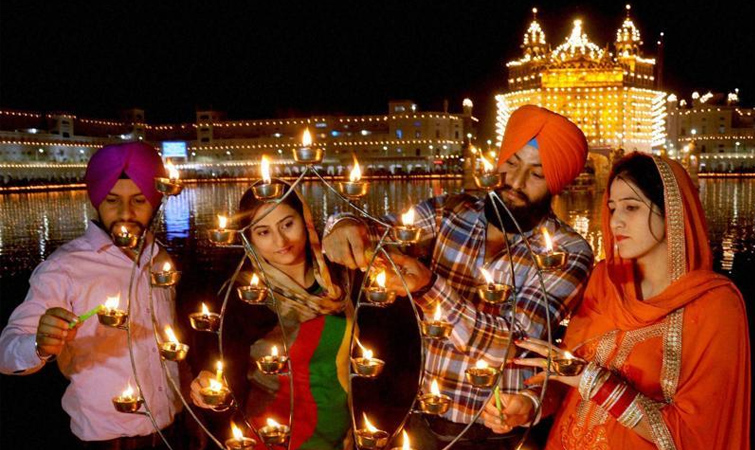 Guru Nanak Jayanti celebrates the day when the first Guru of Sikh religion, Guru Nanak Dev ji was born. Though the day is celebrated throughout the country, the celebrations are most impressive at the ‘Golden Temple’ in Amritsar, Punjab. Elaborately decorated and illuminated ‘Golden Temple’ is in its full awe during the celebrations. The festivities start 3-weeks before the Guru Nanak Jayanti and holy processions are taken through the streets of Amritsar early in the mornings. ‘Guru Granth Sahib’, the holy book of Sikhs is garlanded with flowers and a continuous reciting of the book, known as ‘Akhand Path’, begins three days before the actual event. Umpteen number of people visit the temple to be part of this holy ritual. On the actual day, the holy book is carried in a beautifully decorated palanquin and is led by the ‘Panj Pyare’, the five armed guards of the book with ‘Nishan Sahib’, the Sikh flag, in their hands. Martial art performances by the Gatka artists during the procession is a treat to eyes. Special ‘Langar’ Prasad is provided to each visitor irrespective of his cast or religion.
Guru Nanak Jayanti celebrates the day when the first Guru of Sikh religion, Guru Nanak Dev ji was born. Though the day is celebrated throughout the country, the celebrations are most impressive at the ‘Golden Temple’ in Amritsar, Punjab. Elaborately decorated and illuminated ‘Golden Temple’ is in its full awe during the celebrations. The festivities start 3-weeks before the Guru Nanak Jayanti and holy processions are taken through the streets of Amritsar early in the mornings. ‘Guru Granth Sahib’, the holy book of Sikhs is garlanded with flowers and a continuous reciting of the book, known as ‘Akhand Path’, begins three days before the actual event. Umpteen number of people visit the temple to be part of this holy ritual. On the actual day, the holy book is carried in a beautifully decorated palanquin and is led by the ‘Panj Pyare’, the five armed guards of the book with ‘Nishan Sahib’, the Sikh flag, in their hands. Martial art performances by the Gatka artists during the procession is a treat to eyes. Special ‘Langar’ Prasad is provided to each visitor irrespective of his cast or religion.
Ambubasi Mela, Assam
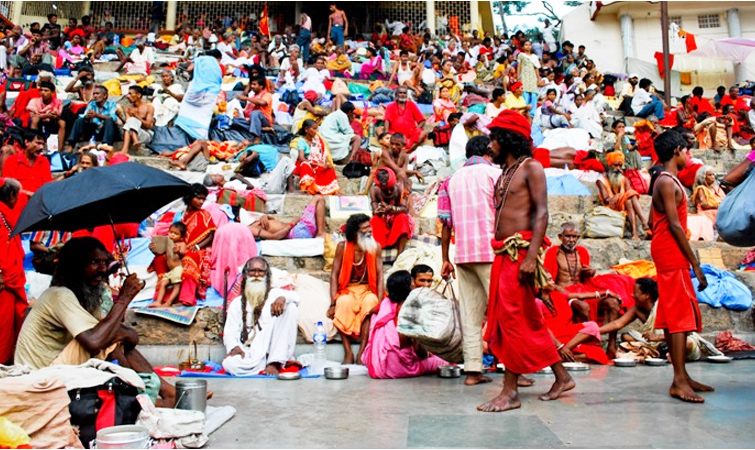
Photo: bit.ly/1MhBaSj
‘Kamakhya Devi Temple’ in Guwahati, Assam, is the temple dedicated to Goddess Kamakhya who represents Mother Earth. The temple is also a ‘Siddha Shaktipeeth’ where the ‘yoni’ or ‘vagina’ of Goddess Sati is believed to have fallen when she immolated herself. An annual 3-days fair called the ‘Ambubasi Mela’ is organized in the month of June when it is believed that Goddess Kamakhya goes through her cycle of menstruation. Fair is a huge crowd puller for pilgrims, tantriks, sadhus, saints, tourists and curious travellers from different parts of India and the world. Tantriks can be seen performing some unusual rituals that attract lots of international tourists and media. Temple remains closed during these 3 days and on the final day, Goddess is bathed and purified by temple priests. On the 4th day, hordes of devotees gather on the temple gate to get the divine darshans of the Goddess.
Hopefully, the above list of temple festivals help you give a fair idea of beliefs and customs prevalent in the Indian society. An experience of cultural vacations in India is incomplete without being part of few of these festivals.
Published: 14 Mar, 2016
Kamlesh Nayal is the Senior Tour Manager at TourMyIndia.com. With his great managerial skills he takes care of the domestic clientele of the organization. Along with the administrative expertise, he is blessed with a tremendous writing style. Packed with precise factual information, his write ups are very helpful for both Indian and foreign tourists.



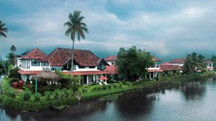 13 Nights / 14 Days
13 Nights / 14 Days 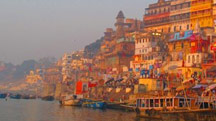 15 Nights / 16 Days
15 Nights / 16 Days 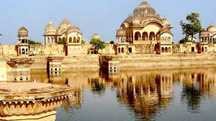 16 Nights / 17 Days
16 Nights / 17 Days 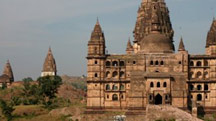 13 Nights / 14 Days
13 Nights / 14 Days  The world famous ‘Rath Yatra’ in Jagannath Puri, Odissa, is one of the most eagerly awaited festivals of India. Celebrated annually in the months of June-July, the festival is an exotic display of extravagance and grandeur. During the festival, deities of Lord Jagannath along with his elder brother, Balabhadra and sister, Subhadra are carried in huge and colourful chariots made in the form of temples. These chariots are pulled through strings and a magnanimous crowd of devotees from all over India and across the world gather in streets to just have an opportunity of touching these strings. The Yatra comes to an end when all three deities reach the ‘Shri Gundicha Temple’, dedicated to the aunt of Lord Jagannath. Deities reside in the temple for 9 days and are served with sweets and chappan bhog. On the 9th day, deities are carried back to the Jagannath Temple with same pomp and show. This event is called as the ‘Bahuda Jatra’. City of Puri, during these two days, converts into myriad of colours. Millions of pilgrims and spectators gather during the festival to seek blessings of the lord.
The world famous ‘Rath Yatra’ in Jagannath Puri, Odissa, is one of the most eagerly awaited festivals of India. Celebrated annually in the months of June-July, the festival is an exotic display of extravagance and grandeur. During the festival, deities of Lord Jagannath along with his elder brother, Balabhadra and sister, Subhadra are carried in huge and colourful chariots made in the form of temples. These chariots are pulled through strings and a magnanimous crowd of devotees from all over India and across the world gather in streets to just have an opportunity of touching these strings. The Yatra comes to an end when all three deities reach the ‘Shri Gundicha Temple’, dedicated to the aunt of Lord Jagannath. Deities reside in the temple for 9 days and are served with sweets and chappan bhog. On the 9th day, deities are carried back to the Jagannath Temple with same pomp and show. This event is called as the ‘Bahuda Jatra’. City of Puri, during these two days, converts into myriad of colours. Millions of pilgrims and spectators gather during the festival to seek blessings of the lord. Thrissur is the cultural centre of Kerala and the ‘Thrissur Pooram’ festival celebrated in this sacred city of Lord Shiva is a true spectacle of grandeur and opulence. Held in the months of April-May, at the ‘Vadakkumnathan Temple’, the festival is a week-long gala affair. During the festival, priests of different temples pay their obeisance to Lord Shiva. Devotees and spectators from different corners of the country throng to this place to just catch a glimpse of the festival’s magnificence and vibrancy. A friendly tug-of-war competition held between two groups of temples divided in Eastern and Western zones with their majestically ornamented elephants, fireworks and exchange of huge colourful umbrellas, known as the ‘Kudamattam’ ceremony; is truly a visual treat to eyes.
Thrissur is the cultural centre of Kerala and the ‘Thrissur Pooram’ festival celebrated in this sacred city of Lord Shiva is a true spectacle of grandeur and opulence. Held in the months of April-May, at the ‘Vadakkumnathan Temple’, the festival is a week-long gala affair. During the festival, priests of different temples pay their obeisance to Lord Shiva. Devotees and spectators from different corners of the country throng to this place to just catch a glimpse of the festival’s magnificence and vibrancy. A friendly tug-of-war competition held between two groups of temples divided in Eastern and Western zones with their majestically ornamented elephants, fireworks and exchange of huge colourful umbrellas, known as the ‘Kudamattam’ ceremony; is truly a visual treat to eyes. Celebrated in the months of March-April and October-November at the ‘Sree Padmanabha Swamy Temple’ in Thiruvanathapuram, the Arattu festival is one of the most significant and vibrant temple fairs in Kerala. Arattu, actually is the closing ceremony of the 10-day long festivities in the temple but, since the ceremony takes place at such a grand level, it is no less than a full-fledged fair. During the ceremony, temple idols are taken to the ‘Shankumugham Beach’ for a holy bath. Huge procession of beautifully decorated elephants accompanied with drummers, musicians and dancers display a magnificent splendour of the grand festivities. Nightlong Kathakali dance performances, Velakali and Mayilattom (peacock dance) are other major highlights of this 10-day long gala event.
Celebrated in the months of March-April and October-November at the ‘Sree Padmanabha Swamy Temple’ in Thiruvanathapuram, the Arattu festival is one of the most significant and vibrant temple fairs in Kerala. Arattu, actually is the closing ceremony of the 10-day long festivities in the temple but, since the ceremony takes place at such a grand level, it is no less than a full-fledged fair. During the ceremony, temple idols are taken to the ‘Shankumugham Beach’ for a holy bath. Huge procession of beautifully decorated elephants accompanied with drummers, musicians and dancers display a magnificent splendour of the grand festivities. Nightlong Kathakali dance performances, Velakali and Mayilattom (peacock dance) are other major highlights of this 10-day long gala event.

 Held at the ‘Cheluvanarayana Swamy Temple’ in Melukote, the prominent pilgrim centre for Vaishnavites near Mysore in Karnataka, the ‘Vairamudi Brahmotsava Festival’ is a huge crowd puller attracting more than 4 lac pilgrims from all over India and parts of the world. The celebrations take place in the months of March-April when Lord Cheluvarayaswami, a manifestation of Lord Vishnu, is adorned with a diamond studded crown belonging to the Mysore’s royal family and is taken out in an elaborate procession with his consorts on a golden Garuda. Huge number of devotees gathers in the town a night before to be part of the rituals and grand processions.
Held at the ‘Cheluvanarayana Swamy Temple’ in Melukote, the prominent pilgrim centre for Vaishnavites near Mysore in Karnataka, the ‘Vairamudi Brahmotsava Festival’ is a huge crowd puller attracting more than 4 lac pilgrims from all over India and parts of the world. The celebrations take place in the months of March-April when Lord Cheluvarayaswami, a manifestation of Lord Vishnu, is adorned with a diamond studded crown belonging to the Mysore’s royal family and is taken out in an elaborate procession with his consorts on a golden Garuda. Huge number of devotees gathers in the town a night before to be part of the rituals and grand processions.


 Vaikunth Chaturdashi is one of the most auspicious days for Hindus. This day is celebrated in a grand way during the months of October-November at the ‘Kamleshwar Mahadev Temple’ in Srinagar, Uttarakhand. Thousands of devotees visit the temple on this auspicious day to pay homage to Lord Shiva. People stay awake all night and pray to Lord Shiva with lighted ‘diyas’ in their hands. It is believed that standing and praying all night with a diya in hand on the day of Vaikunth Chaturdashi, can fulfil the wish of a child for childless couples. View of the ‘Alaknanda River’ illuminated with lighted lamps on the night of Vaikunth Chaturdashi is a sight to behold. A 5-day fair organized in the temple is also an event to look forward to during the celebrations.
Vaikunth Chaturdashi is one of the most auspicious days for Hindus. This day is celebrated in a grand way during the months of October-November at the ‘Kamleshwar Mahadev Temple’ in Srinagar, Uttarakhand. Thousands of devotees visit the temple on this auspicious day to pay homage to Lord Shiva. People stay awake all night and pray to Lord Shiva with lighted ‘diyas’ in their hands. It is believed that standing and praying all night with a diya in hand on the day of Vaikunth Chaturdashi, can fulfil the wish of a child for childless couples. View of the ‘Alaknanda River’ illuminated with lighted lamps on the night of Vaikunth Chaturdashi is a sight to behold. A 5-day fair organized in the temple is also an event to look forward to during the celebrations.

 Buddha Purnima marks the birthday of Lord Buddha and is celebrated with great fervour and enthusiasm at the ‘Mahabodhi Temple’ in Bodhgaya. The sacred city of Bodhgaya holds a great religious significance for Buddhists all over the world as it is the place where Lord Buddha attained enlightenment. Thousands of Buddhist monks, tourists and devotees throng the temple to be a part of special prayers and celebrations that are held on this day. Chanting of Buddhist hymns and prayers can be heard throughout the day in the Mahabodhi Temple complex, which is beautifully decorated with prayer flags and colourful buntings. As part of the celebrations, a grand procession is also carried out from the 80 ft. ‘Grand Buddha Statue’ up to the ‘Bodhi Tree’ and devotees offer fruits, flowers and incense to the statue of Buddha. Being part of these grand celebrations is one of the most divine experiences you can have in lifetime.
Buddha Purnima marks the birthday of Lord Buddha and is celebrated with great fervour and enthusiasm at the ‘Mahabodhi Temple’ in Bodhgaya. The sacred city of Bodhgaya holds a great religious significance for Buddhists all over the world as it is the place where Lord Buddha attained enlightenment. Thousands of Buddhist monks, tourists and devotees throng the temple to be a part of special prayers and celebrations that are held on this day. Chanting of Buddhist hymns and prayers can be heard throughout the day in the Mahabodhi Temple complex, which is beautifully decorated with prayer flags and colourful buntings. As part of the celebrations, a grand procession is also carried out from the 80 ft. ‘Grand Buddha Statue’ up to the ‘Bodhi Tree’ and devotees offer fruits, flowers and incense to the statue of Buddha. Being part of these grand celebrations is one of the most divine experiences you can have in lifetime. Guru Nanak Jayanti celebrates the day when the first Guru of Sikh religion, Guru Nanak Dev ji was born. Though the day is celebrated throughout the country, the celebrations are most impressive at the ‘Golden Temple’ in Amritsar, Punjab. Elaborately decorated and illuminated ‘Golden Temple’ is in its full awe during the celebrations. The festivities start 3-weeks before the Guru Nanak Jayanti and holy processions are taken through the streets of Amritsar early in the mornings. ‘Guru Granth Sahib’, the holy book of Sikhs is garlanded with flowers and a continuous reciting of the book, known as ‘Akhand Path’, begins three days before the actual event. Umpteen number of people visit the temple to be part of this holy ritual. On the actual day, the holy book is carried in a beautifully decorated palanquin and is led by the ‘Panj Pyare’, the five armed guards of the book with ‘Nishan Sahib’, the Sikh flag, in their hands. Martial art performances by the Gatka artists during the procession is a treat to eyes. Special ‘Langar’ Prasad is provided to each visitor irrespective of his cast or religion.
Guru Nanak Jayanti celebrates the day when the first Guru of Sikh religion, Guru Nanak Dev ji was born. Though the day is celebrated throughout the country, the celebrations are most impressive at the ‘Golden Temple’ in Amritsar, Punjab. Elaborately decorated and illuminated ‘Golden Temple’ is in its full awe during the celebrations. The festivities start 3-weeks before the Guru Nanak Jayanti and holy processions are taken through the streets of Amritsar early in the mornings. ‘Guru Granth Sahib’, the holy book of Sikhs is garlanded with flowers and a continuous reciting of the book, known as ‘Akhand Path’, begins three days before the actual event. Umpteen number of people visit the temple to be part of this holy ritual. On the actual day, the holy book is carried in a beautifully decorated palanquin and is led by the ‘Panj Pyare’, the five armed guards of the book with ‘Nishan Sahib’, the Sikh flag, in their hands. Martial art performances by the Gatka artists during the procession is a treat to eyes. Special ‘Langar’ Prasad is provided to each visitor irrespective of his cast or religion.

